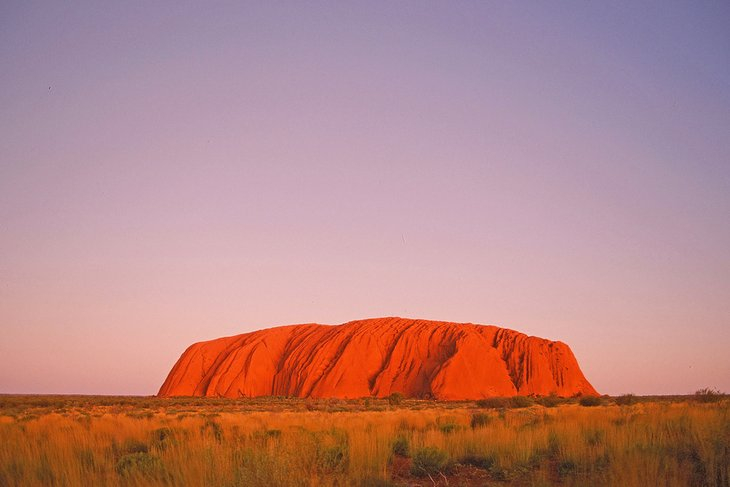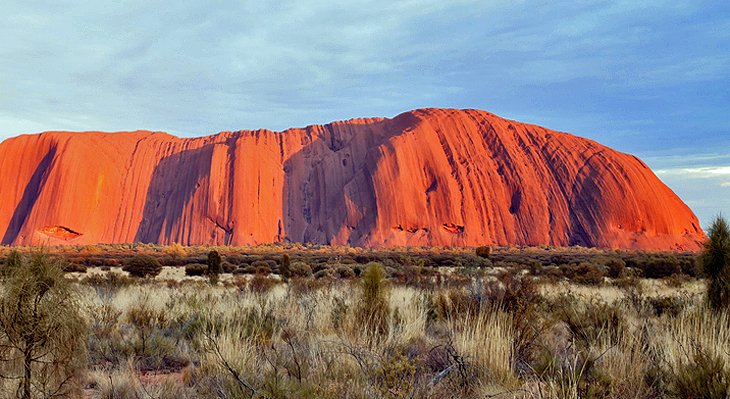Uluru-Kata Tjuta National Park, Northern Territory
Uluru (previously Ayers Rock) is one of Australia's most photographed natural wonders, located deep in the heart of the country's Red Centre. Uluru-Kata Tjuta National Park, a World Heritage Site maintained jointly by Parks Australia and the traditional proprietors, the Aangu people, is home to the spectacular red monolith. Uluru, which is Aboriginal for "shadowy place," rises 348 meters above the surrounding plain. The majority of its mass is beneath the surface of the planet.
As the year progresses, a tidal wave of color sweeps across the plain that surrounds Uluru and Kata Tjuta, with over 400 different plant species. Purple, yellow, and an unlimited variety of greens can be seen depending on the time of year. Winter offers small desert flowers in white, pink, and crimson up close, while the horizon is dotted with fluffy yellow mulga (wattle) blooms.
In Uluru-Kata Tjuta National Park, there are a plethora of birds, especially around water sources, thanks to all of these plants and flowers. Among the various birds, you'll see are ring-necked parrots, rainbow bee-eaters, cockatoos, and willy wagtails. The area is home to the rufous-hare wallaby, kangaroos, dingos, spinifex hopping mouse, southern marsupial mole, and brush-tailed mulgara, as well as snakes, geckos, lizards, and frogs.
Location: Uluru-Kata Tjuta National Park, Lasseter Highway, Uluru NT 0872, Australia
Entrance fee: free for the under 18-year-old, $25 AUD
Highlight: Splendid sunset as the rocks change their colors, landscape around the rocks.,...
Best time to visit: May to September










